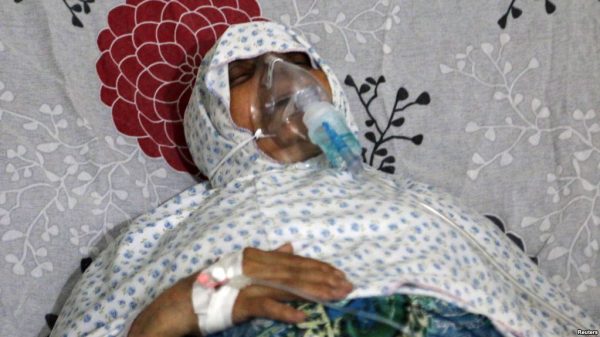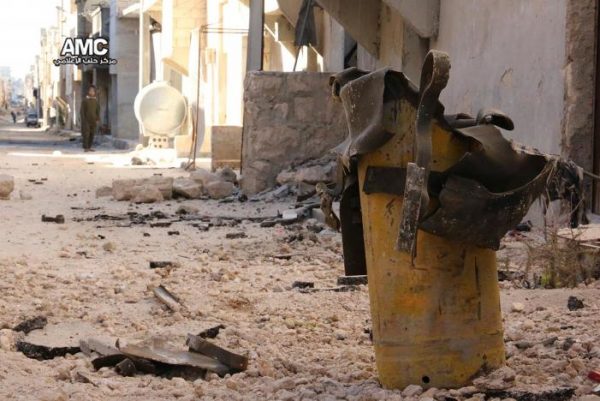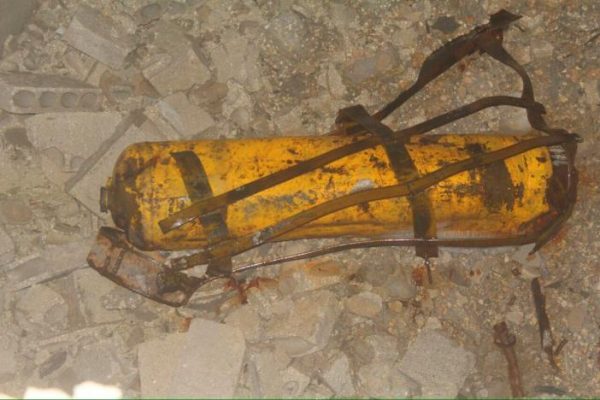
Syrian government forces used chemical weapons in opposition-controlled parts of Aleppo during battles to retake the city late last year, Human Rights Watch said in a report published on Monday.
The findings add to mounting evidence of the use of banned chemical weapons in the six-year-old Syrian civil war and could strengthen calls by Britain, France and the United States for sanctions against Syrian officials.
Government helicopters dropped chlorine bombs “in residential areas in Aleppo on at least eight occasions between November 17 and December 13, 2016,” the New York-based group said.

The Organization for the Prohibition of Chemical Weapons (OPCW), which oversees a global treaty banning toxic warfare, had no immediate comment.
Syria and its ally Russia, which helped state troops in the Aleppo assault, have repeatedly denied using chemical weapons in the conflict. They blame opposition militants seeking to topple the government of President Bashar al-Assad.
Human Rights Watch said its report, which was based on interviews with witnesses, analysis of videos and photos and social media posts, did not find proof of Russian involvement in the chemical attacks, but noted Moscow’s key role in helping the government to retake Aleppo.
“The attacks, some of which included multiple munitions, killed at least nine civilians, including four children, and injured around 200,” it said.

Ole Solvang, deputy emergencies director at Human Rights Watch, said in an interview that the way chemical attacks moved in step with the frontline showed they were an integral part of the offensive.
“This is a strong indication that these chlorine attacks were coordinated with the overall military strategy. And it is a strong indication then that senior military officers, the commanders of this military offensive in Aleppo, knew that chlorine was being used,” he said.
A U.N.-OPCW inquiry assigned to identify organizations and individuals responsible for the chemical attacks concluded last October that Syrian government forces had used chlorine as a chemical weapon at least three times in 2014-15. Islamic State militants, it said, had used sulfur mustard gas in one attack.
The U.N. Security Council extended the mandate of the inquiry, known as the Joint Investigative Mission (JIM), until November this year. It is due to issue its next report by Saturday.
Responding to the JIM’s findings, the United States last month blacklisted 18 senior Syrian officials it said were connected to the country’s weapons of mass destruction program.
Reuters reported in January that leading Syrian officials, including President Assad and his brother, had been identified as possible suspects in the chemical attacks.
Chlorine’s use as a weapon is banned under the Chemical Weapons Convention, which Syria joined in 2013. If inhaled, chlorine gas turns into hydrochloric acid in the lungs and can kill by burning lungs and drowning victims in the resulting body fluids.
REUTERS
Leave a Reply
You must be logged in to post a comment.